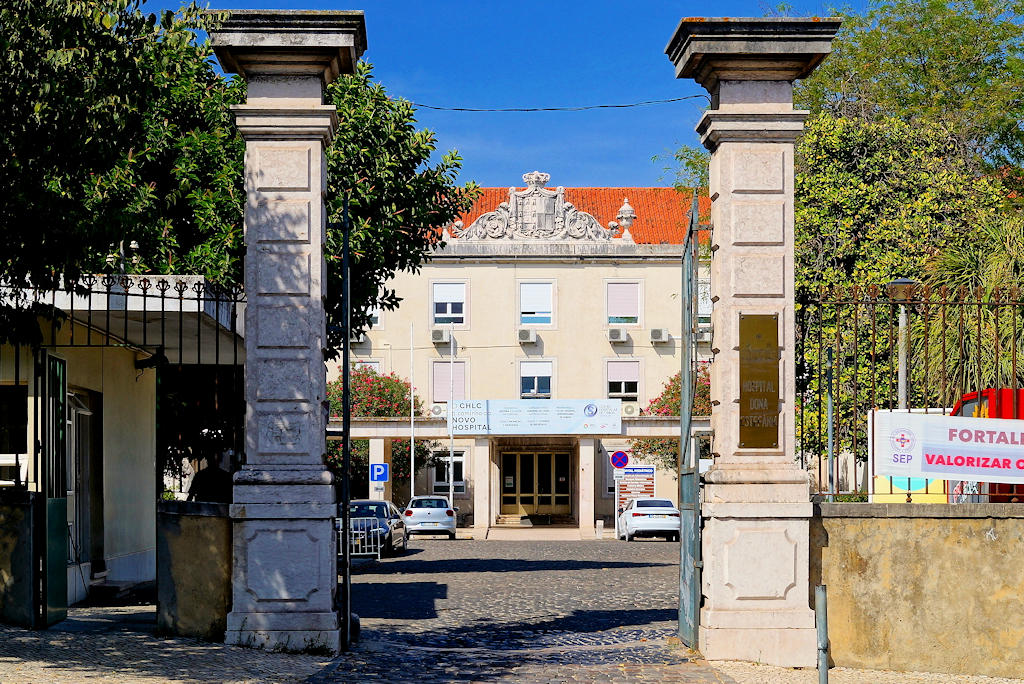In 1860, King Dom Pedro V honored his late wife by initiating the construction of what was then known as the Hospital da Bemposta. It took seven years to complete the construction during the reign of his brother, King Dom Luís I. Subsequently, in 1872, King Dom Luís I transferred the rights of ownership and all assets to the Portuguese state, leading to the hospital being officially named Dona Estefânia Hospital.
Under the patronage of King Dom Pedro V, renowned European royal families provided plans and blueprints for hospitals. The chosen design was created by British architect Albert Jenkins Humbert (1822-1877), who was a favored architect of Prince Albert of Saxe-Coburg and Gotha, the husband of Queen Victoria of the United Kingdom.
The construction of Hospital de Dona Estefânia cost over 250 million réis, with a significant portion contributed by Prince Carlos Antônio de Hohenzollern-Sigmaringen, Dona Estefânia's father. The hospital was built on land owned by the Portuguese Royal Family.
The original hospital building had a cross-shaped layout, featuring four main sections and two floors of wards. Each ward had a length of 45 meters and could accommodate approximately 32 beds. The hospital was equipped with a ventilation system that played a crucial role in maintaining a hygienic environment.
The hospital boasted luxurious marble bathtubs in its bathrooms, as well as a water supply and gas lighting system utilizing petroleum residue. To minimize humidity and prevent potential infections from the ground, the entire hospital was constructed on vaults. Florence Nightingale herself praised the nurses at the Hospital da Bemposta, considering them the best in Europe.
On February 2, 1920, Jacinta Marto, one of the shepherd children who witnessed the apparitions of Our Lady of Fatima in the Cova da Iria, Fátima, was admitted to Ward No. 1 of Dona Estefânia Hospital. Jacinta, who came directly from the Orphanage of Nossa Senhora dos Milagres located on Rua da Estrela in Lisbon (now the Monastery of the Immaculate Heart of Mary, operated by the Clarisses Sisters near Jardim da Estrela), was diagnosed with purulent pleurisy in the left pleural cavity and osteitis (caries) in two ribs (the 7th and 8th on the same side). According to Jacinta's accounts to Mother Maria da Purificação Godinho, the Virgin Mary appeared to her several times during her stay in the hospital. As a tribute to these apparitions, a memorial statue of the Immaculate Heart of Mary stands outside the hospital.
Today, Queen Stephanie's Hospital stands as a prominent institution renowned for its dedication to pediatric care. As the hospital developed over the years, it gained recognition as the leading referral center for pediatric services in the southern region of Portugal and the islands. The hospital's commitment to providing high-quality maternal and child healthcare has earned it international accreditation and established its reputation as a center of excellence.
Lisbon.vip Recommends
Dona Estefânia Hospital's commitment to providing exceptional pediatric care is not limited to its physical infrastructure. The hospital's dedicated medical staff, including specialized physicians, nurses, and support personnel, form a compassionate and skilled team. They work tirelessly to ensure the well-being of their young patients, offering expert medical treatments, surgical interventions, and cutting-edge diagnostic services. Their focus extends beyond medical expertise to encompass holistic care, aiming to create a supportive and comforting environment for children and their families.
Throughout its history, Dona Estefânia Hospital has remained at the forefront of medical advancements and research in pediatric healthcare. As a teaching hospital, it has played a pivotal role in educating future generations of healthcare professionals, particularly in the field of pediatrics. The hospital's close affiliation with the Faculty of Medicine of the University of Lisbon fosters collaboration and knowledge sharing, further enhancing the quality of care provided to patients.
In addition to its medical services, Dona Estefânia Hospital has established itself as a hub for scientific inquiry and innovation. The hospital actively engages in research initiatives, clinical trials, and the development of new treatments and therapies. This dedication to advancing medical knowledge not only benefits the patients at the hospital but also contributes to the broader field of pediatric medicine.
The compassionate and patient-centered approach adopted by Hospital de Dona Estefânia sets it apart as a healthcare institution. The staff members are driven by a deep sense of respect, dedication, empathy, and humanism in their interactions with patients and their families. They uphold the highest standards defined by the World Health Organization (WHO), including competence, effectiveness, teamwork, professional development, and technological innovation.
Dona Estefânia Hospital's overarching goal is to achieve the best possible healthcare outcomes while optimizing resource utilization and ensuring patient satisfaction. This commitment to excellence cannot be understated. The hospital continually strives to provide efficient and effective healthcare services, minimizing risks and maximizing patient well-being.
As Queen Stephanie's Hospital looks towards the future, it remains firmly rooted in its mission to serve the needs of children and families in the community. While plans for relocation and new developments are underway, the hospital's legacy as a pioneer in pediatric care will continue to shape its future endeavors. Hospital de Dona Estefânia stands as a symbol of hope, compassion, and innovation in the realm of pediatric healthcare. From its humble beginnings rooted in the vision of Queen Dona Estefânia to its present-day position as a leading institution, the hospital's commitment to excellence remains unwavering. With a steadfast focus on providing exceptional maternal and child healthcare, Dona Estefânia Hospital continues to impact the lives of countless children and their families, leaving an indelible mark on the healthcare landscape of Lisbon and beyond.
Map View



